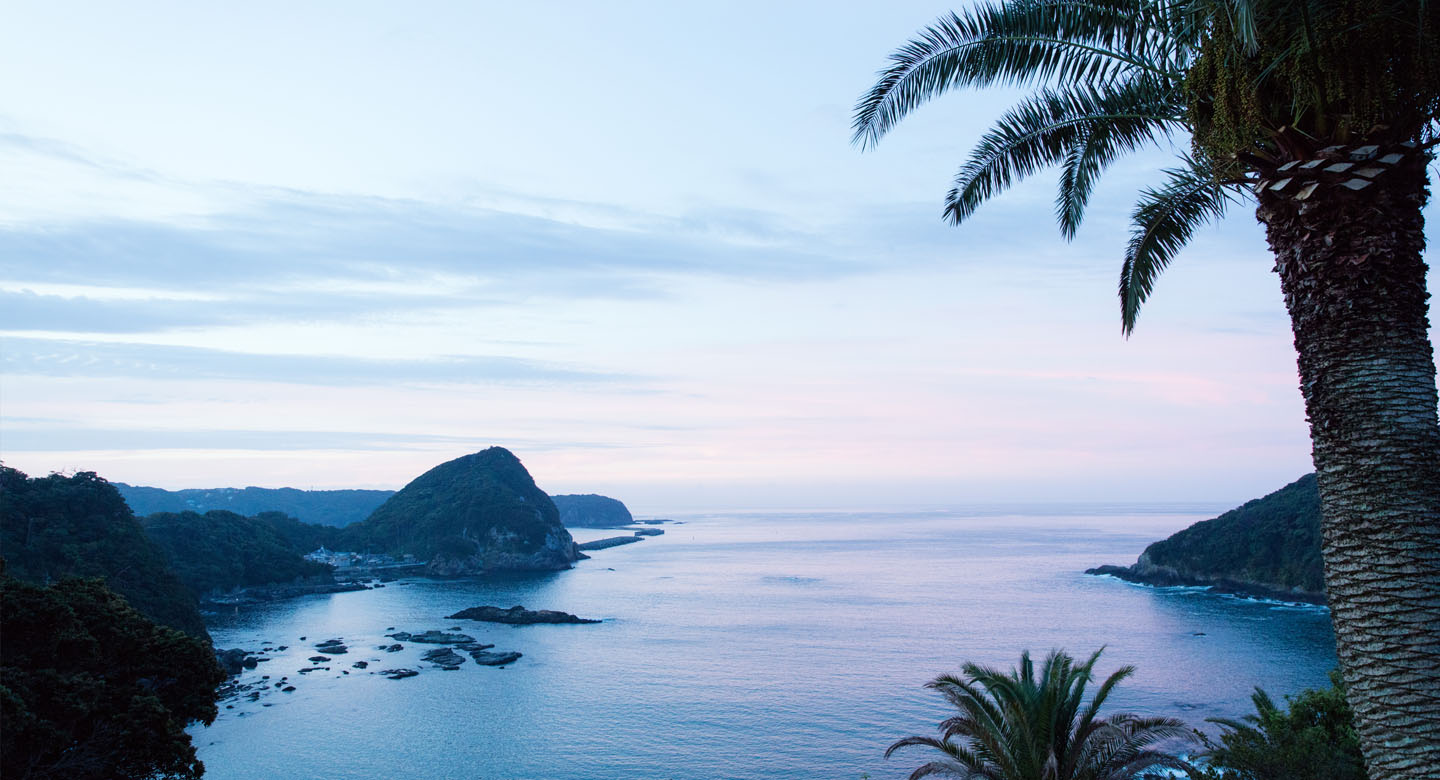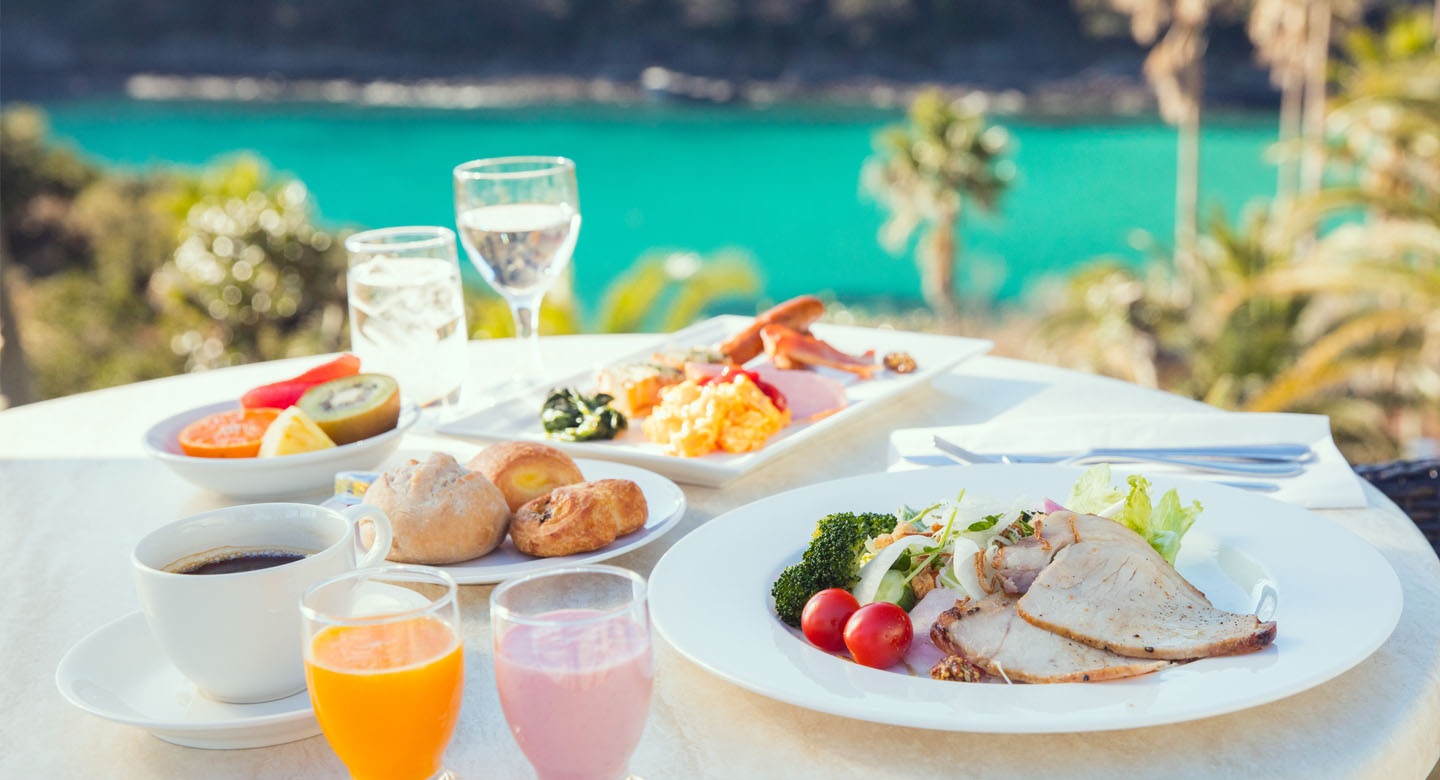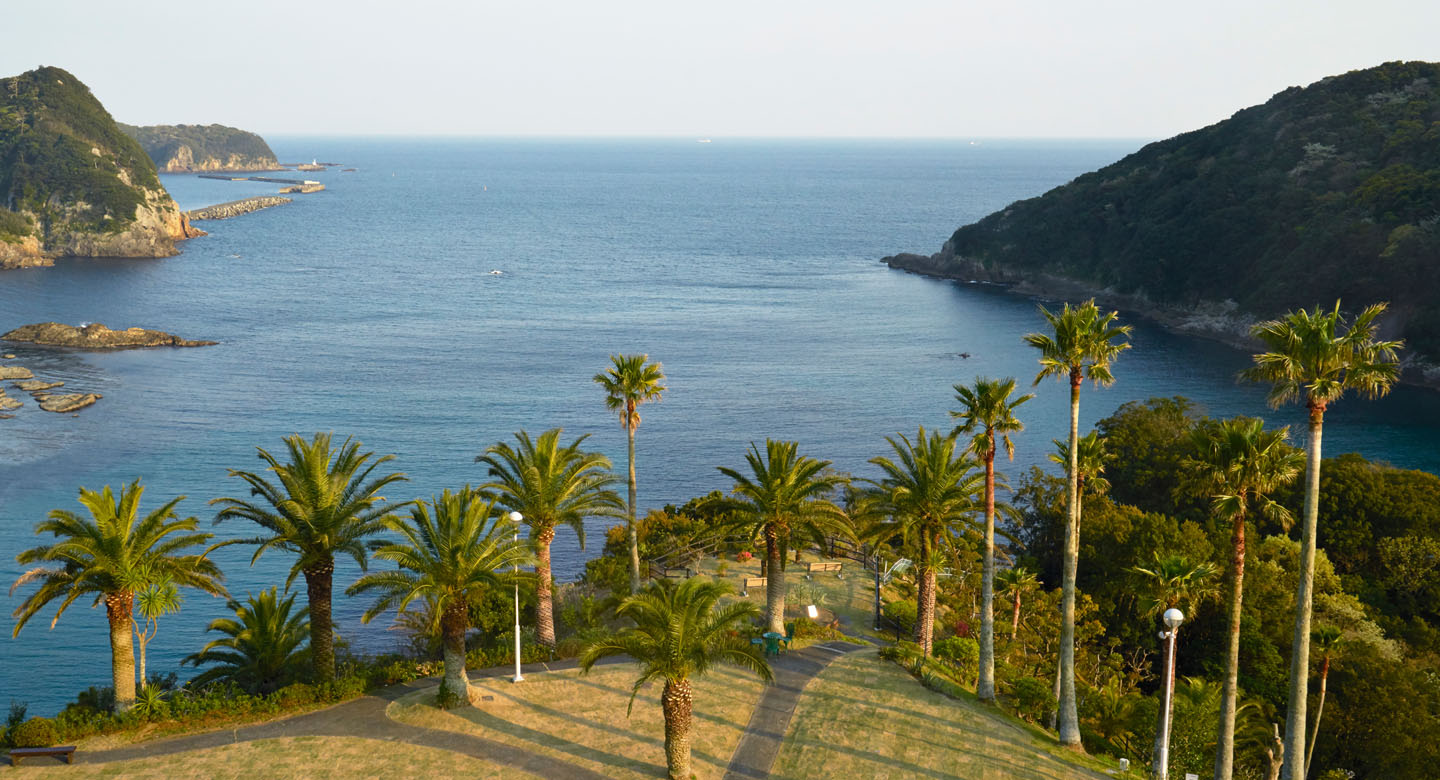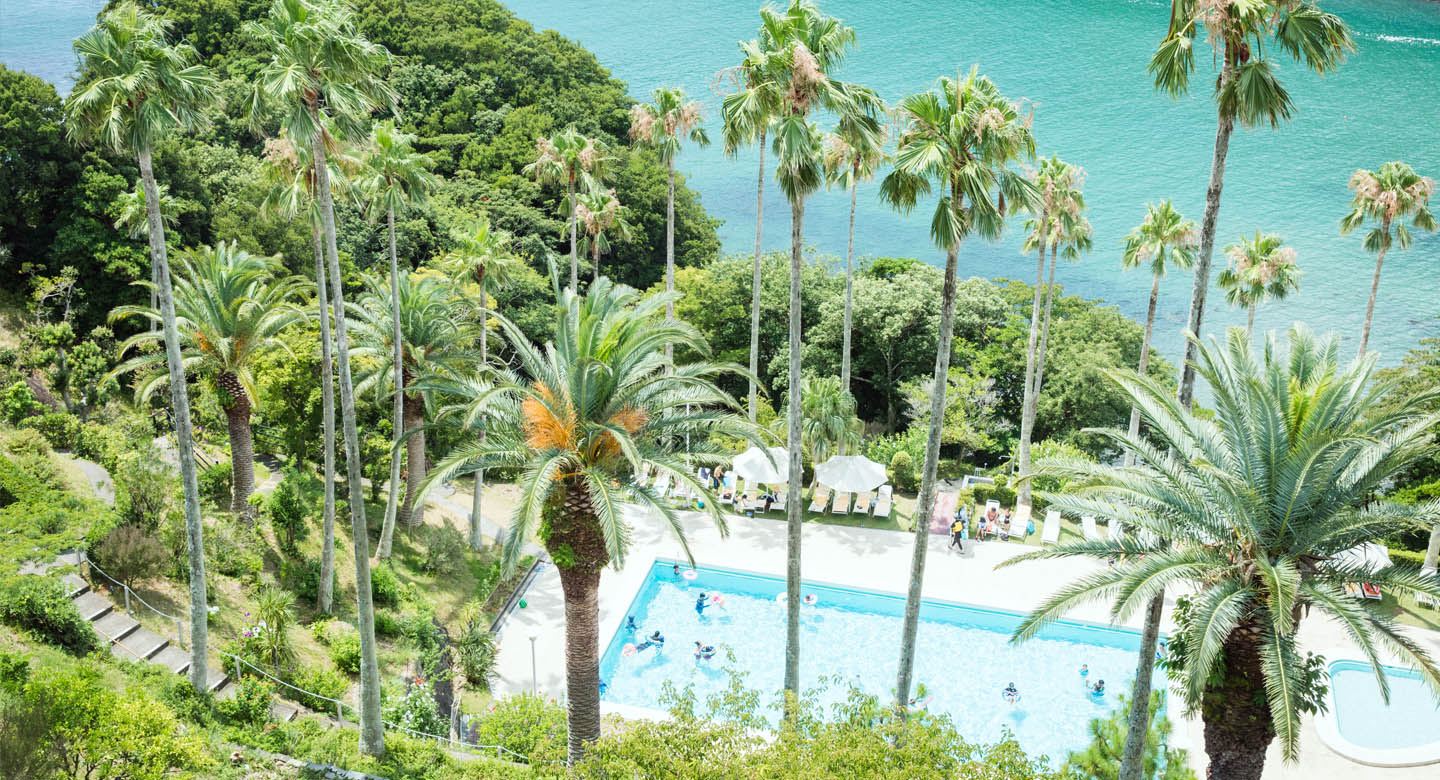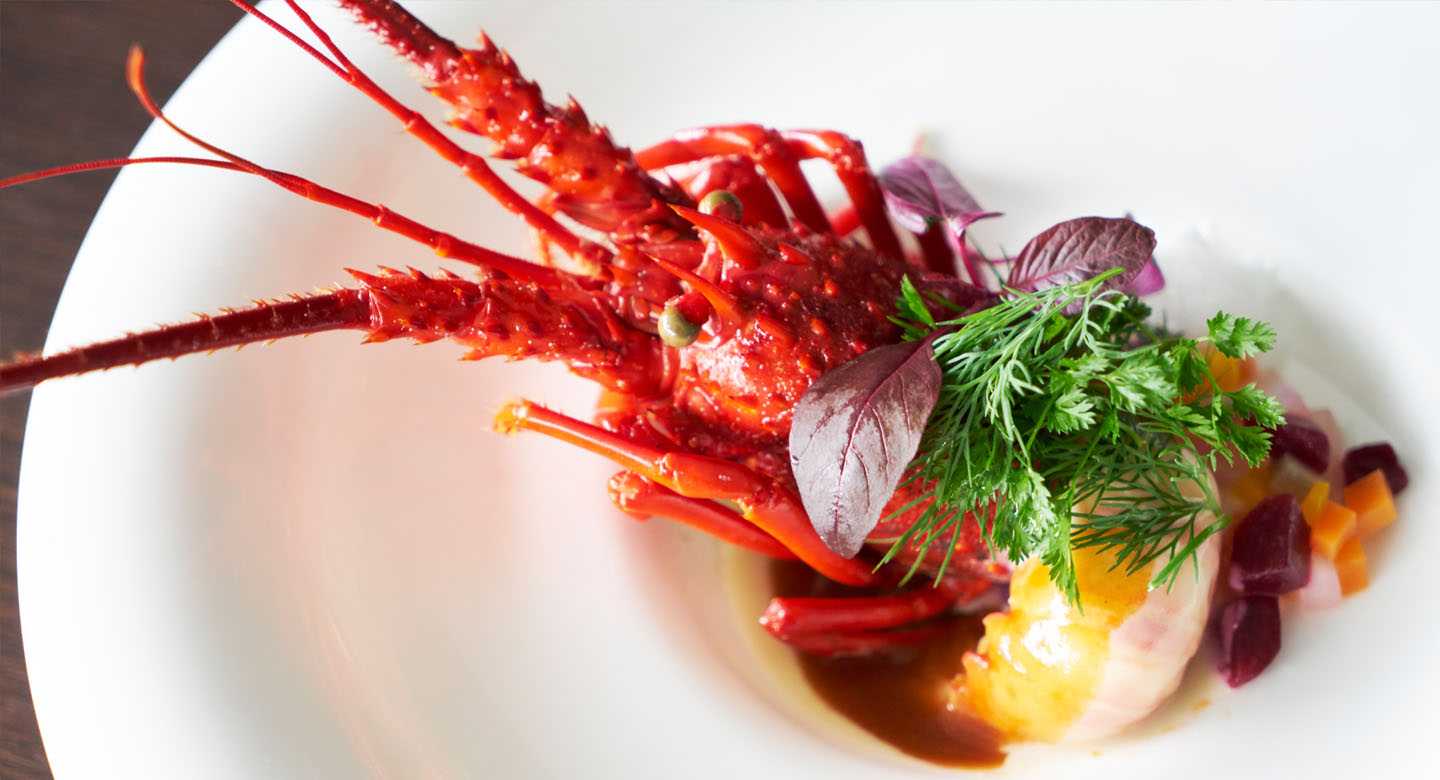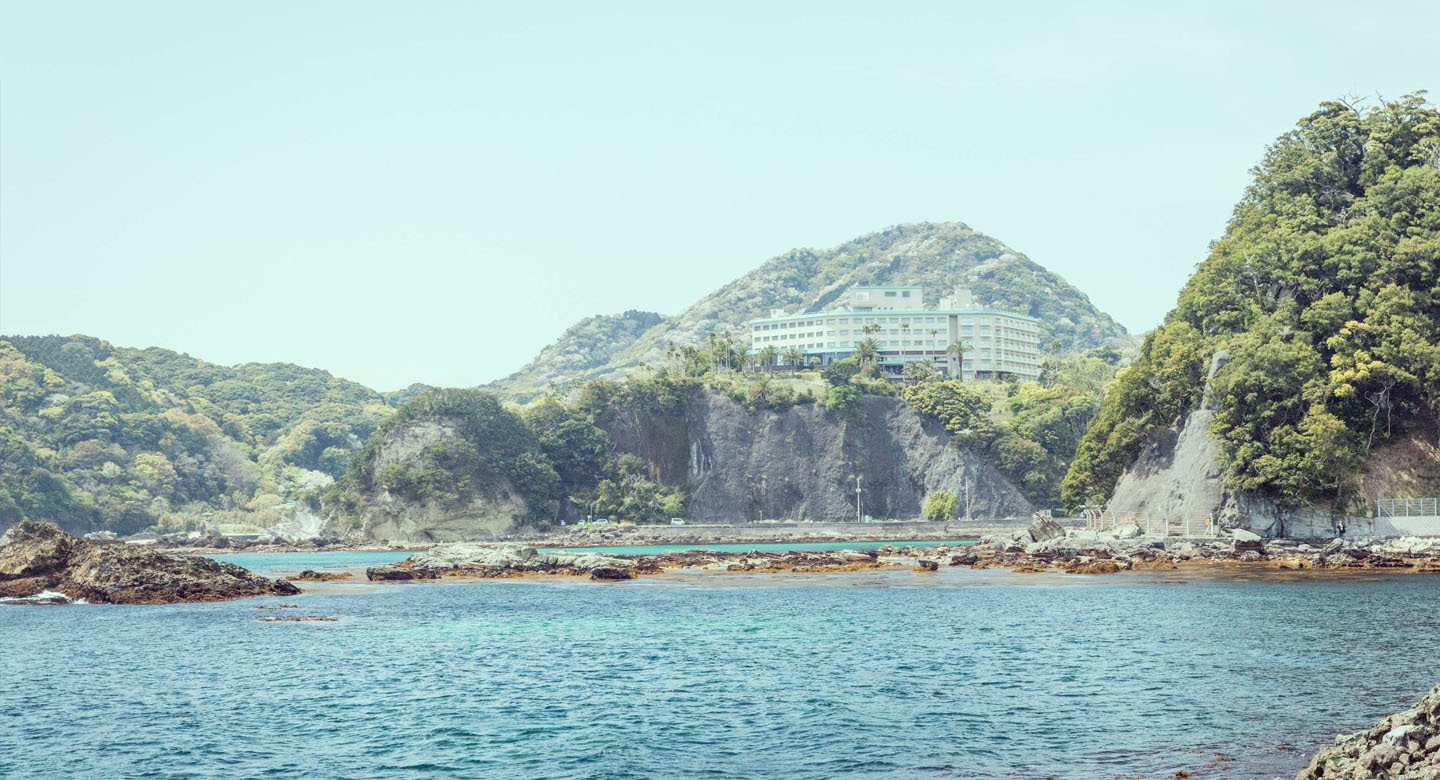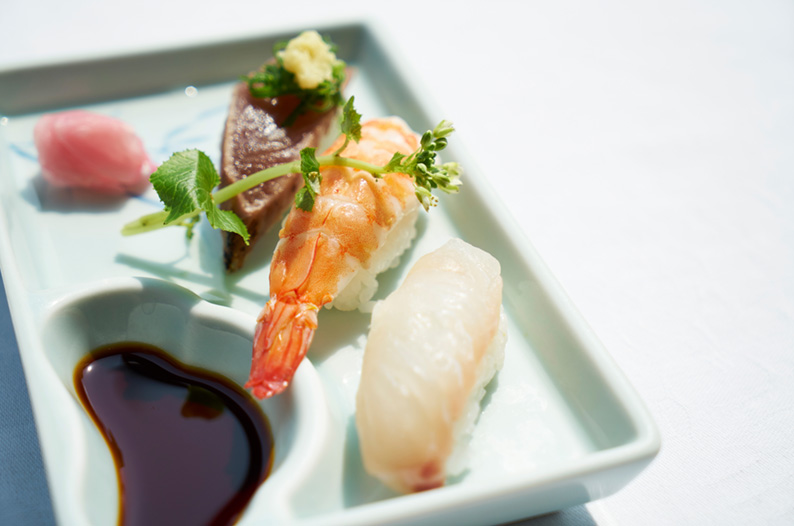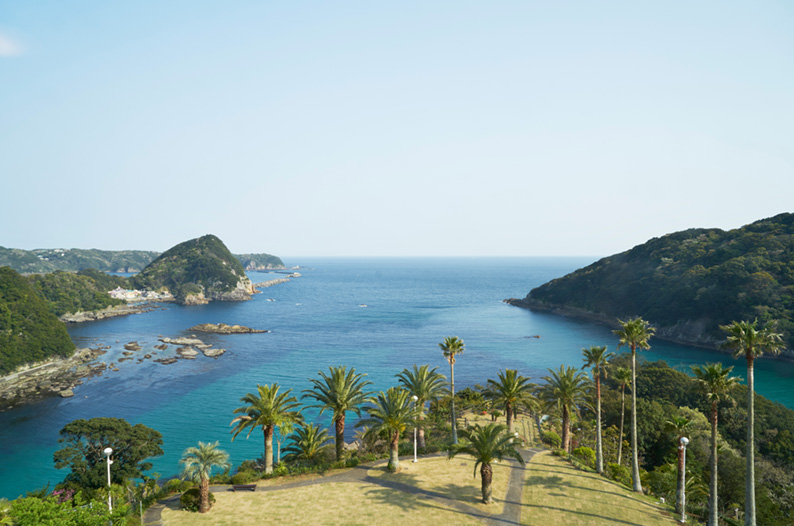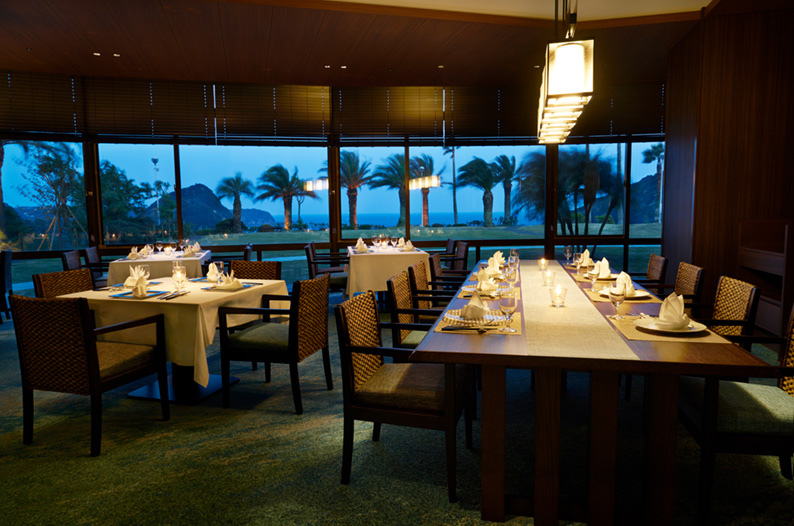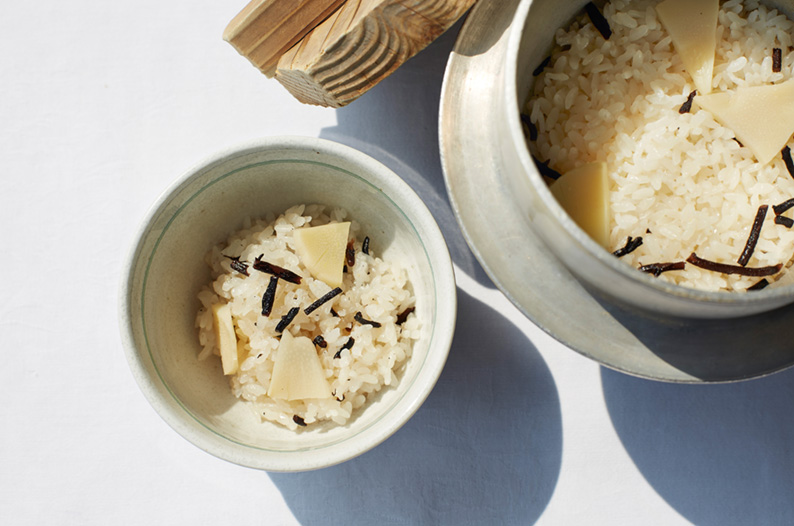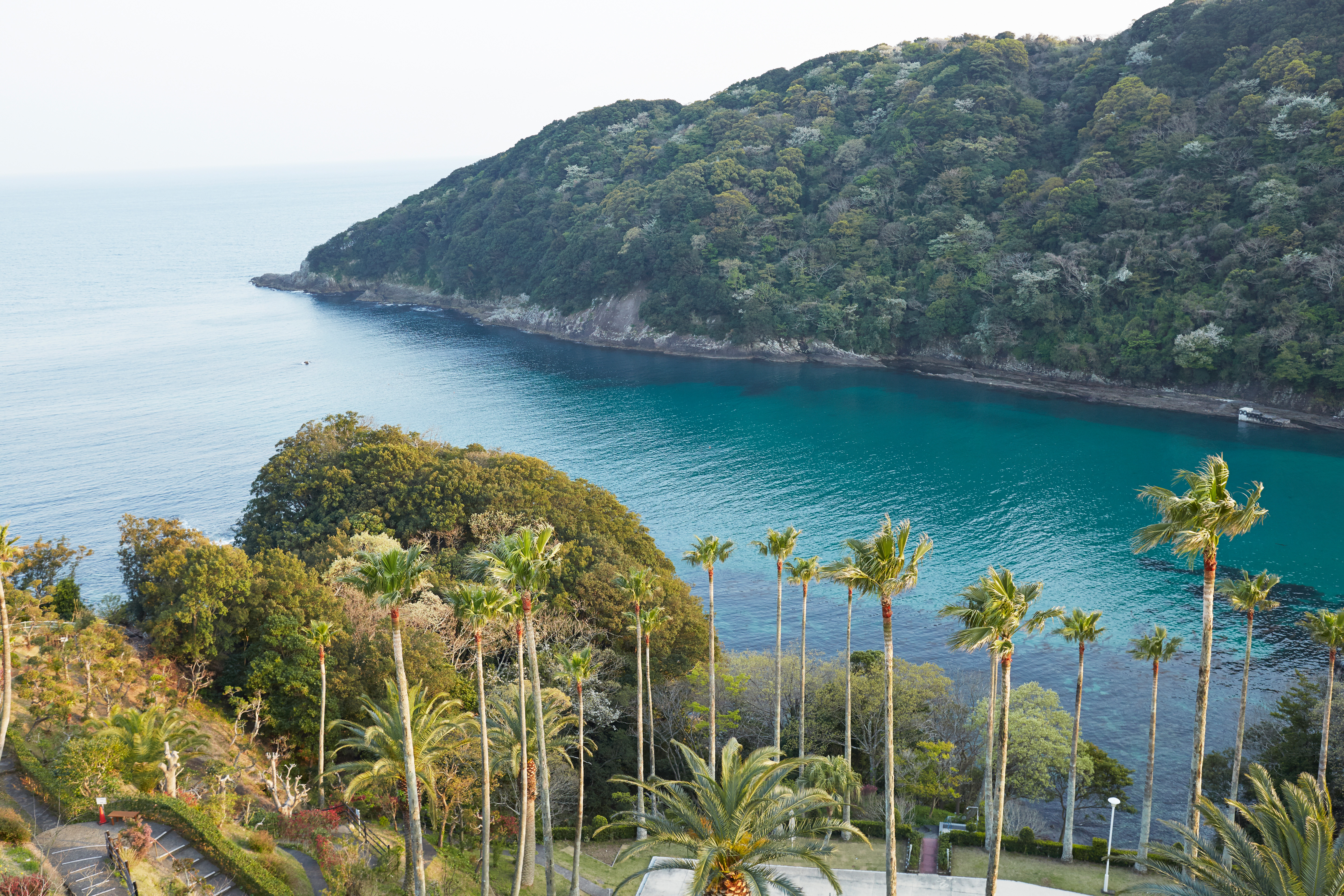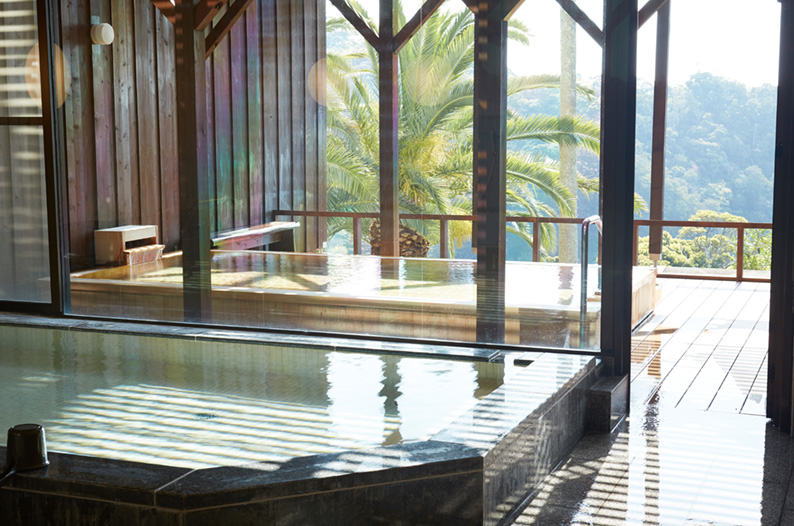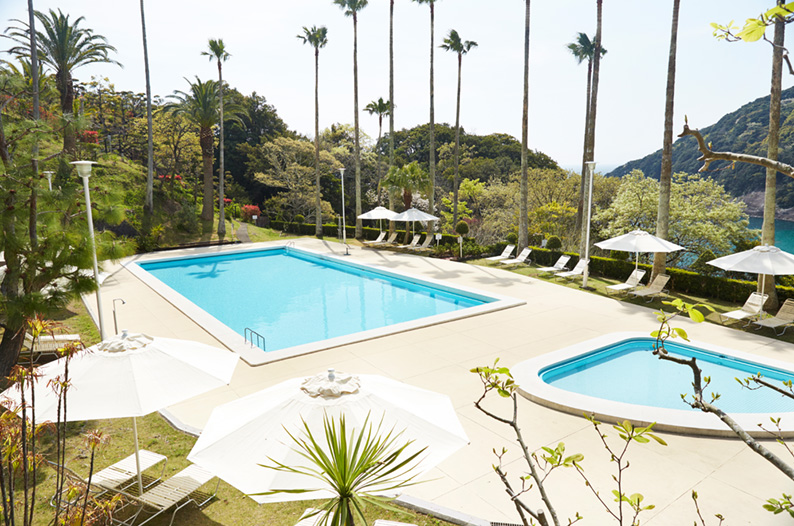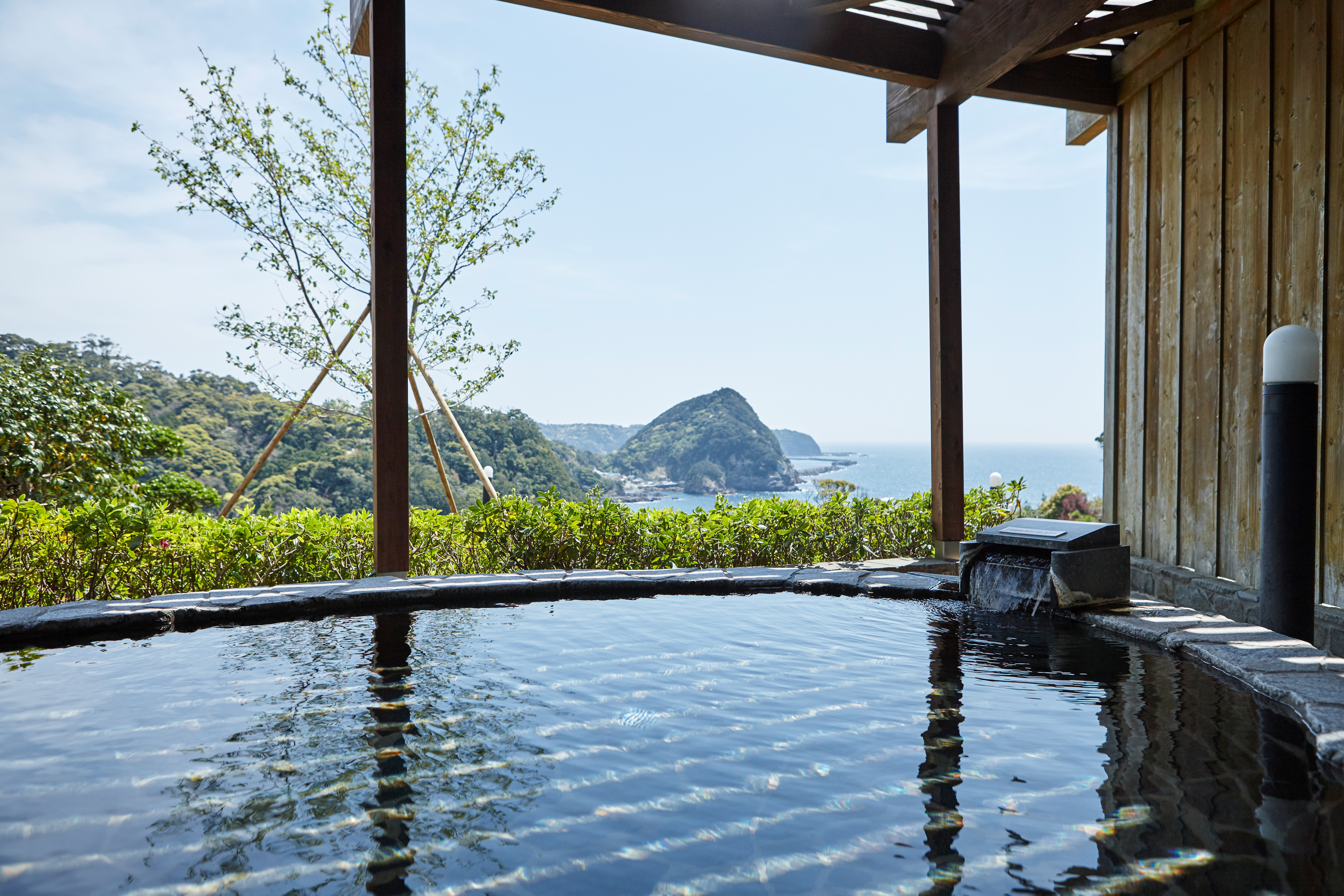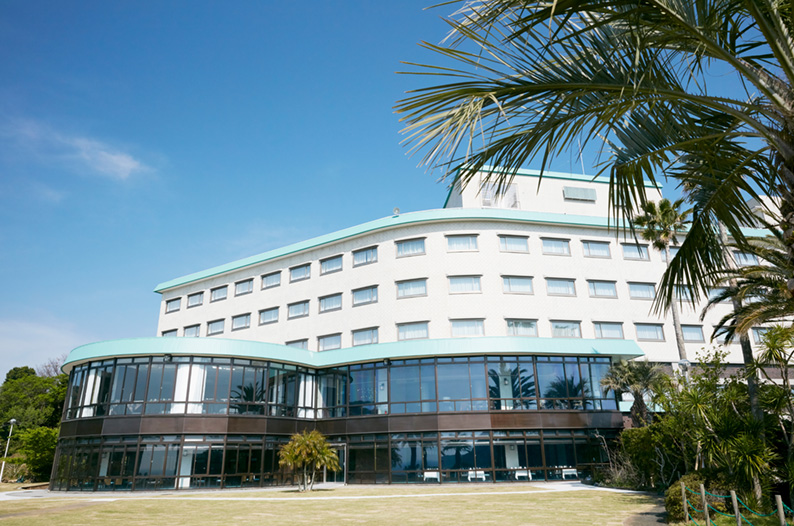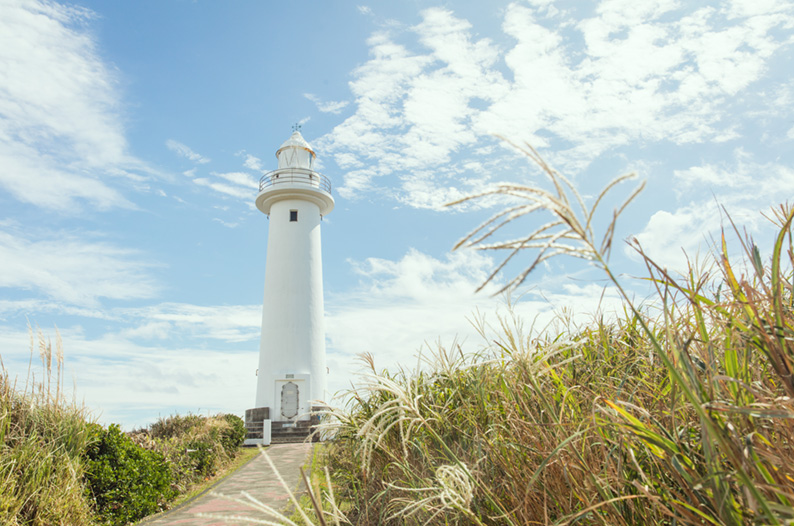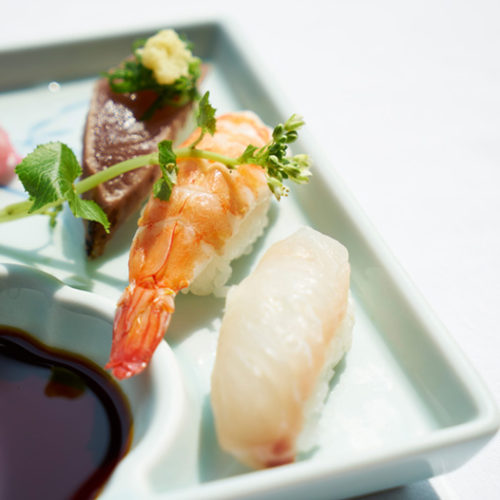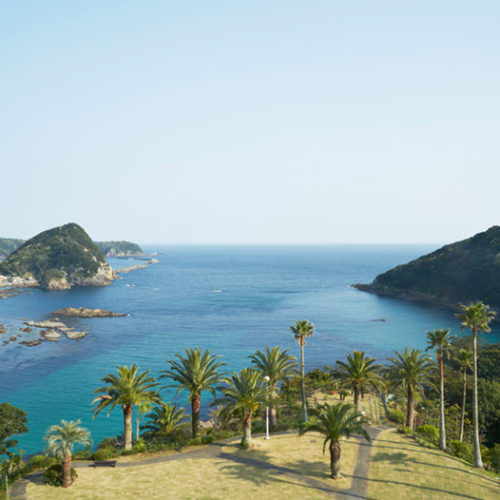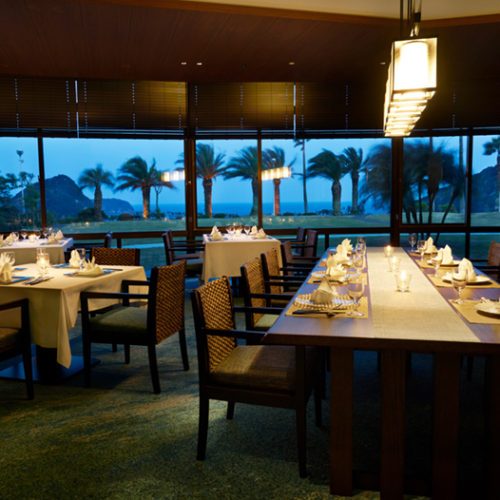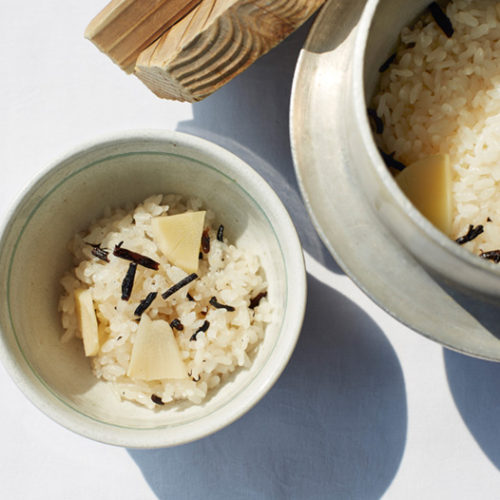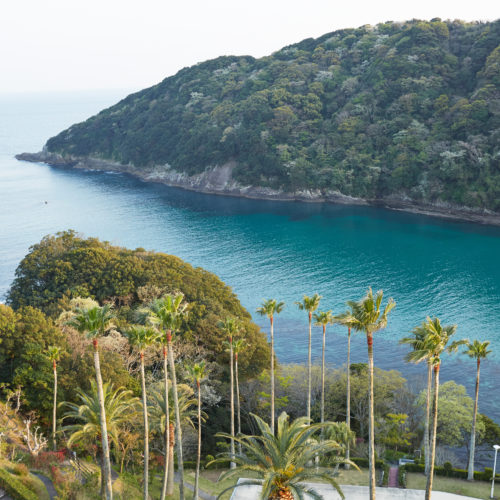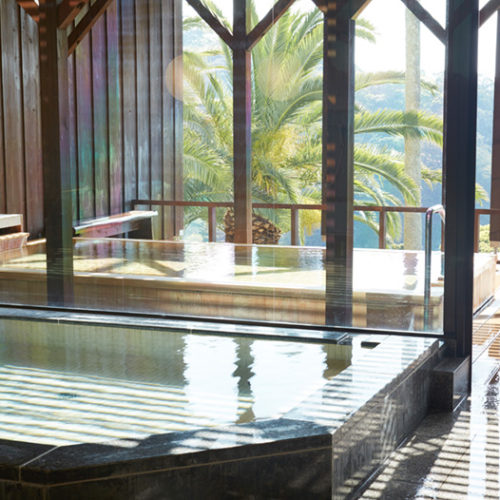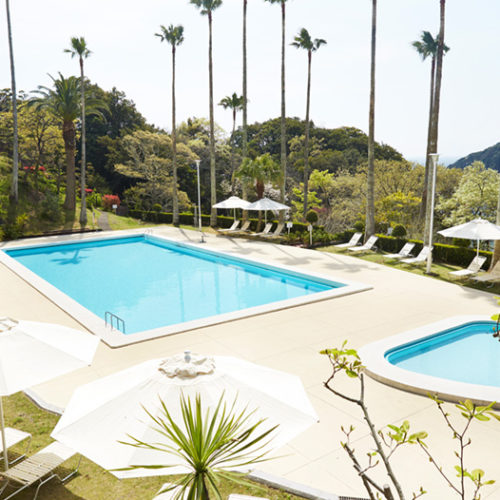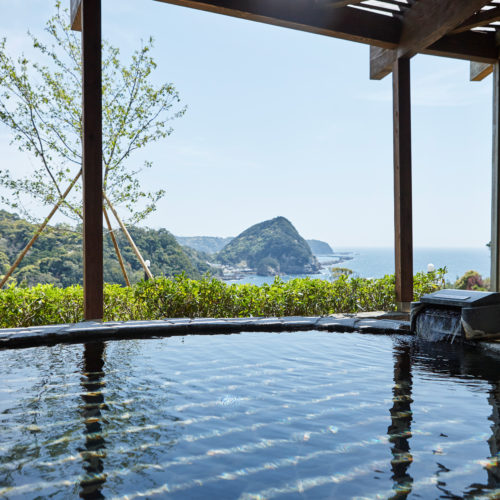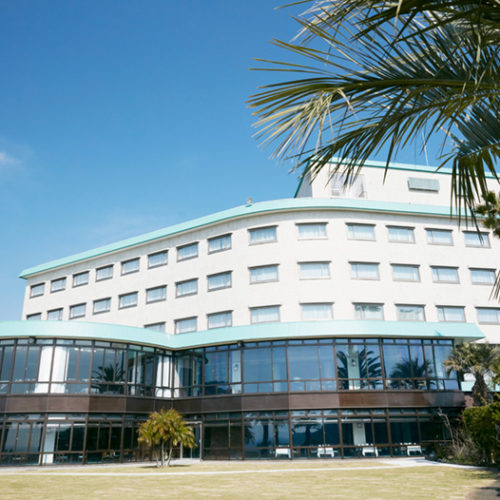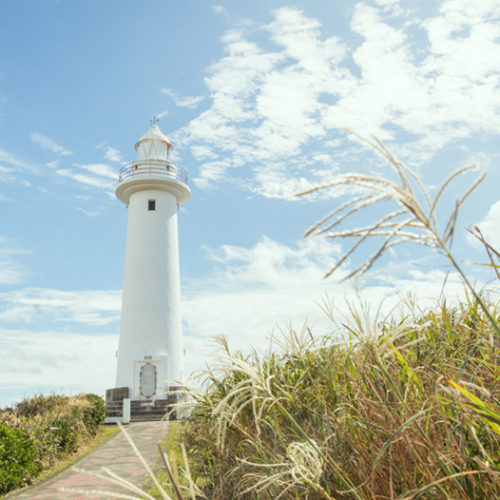Shimoda Tokyu Hotel
Relax your everything! You will see one of the most beautiful beach in Japan.
IZU
Have a Super Fun and Super Relax
From the middle of the Japanese archipelago, Izu Peninsula juts out into the Pacific Ocean. Once a submarine volcano, its unique environment was formed by crustal movement and volcanic activity. Situated near the point of Izu Peninsula, Shimoda Tokyu Hotel stands by the port of Shimoda, which changed the history of Japan.
Beginning in the 17th century, Japan limited its foreign trade and diplomacy for over two centuries. Citizens were prohibited from going abroad, and only four ports were open to foreign countries. Boats from Spain and Portugal were forbidden to enter, while trade was restricted to China, Korean, Netherlands and the Ainu people.
That all changed in 1853, when American military officer Perry arrived with his fleet, demanding Japan to open its ports. The following year, a peace treaty was signed between the United States and Japan to supply food and water to American vessels. This historic event led to the opening of Shimoda Port.
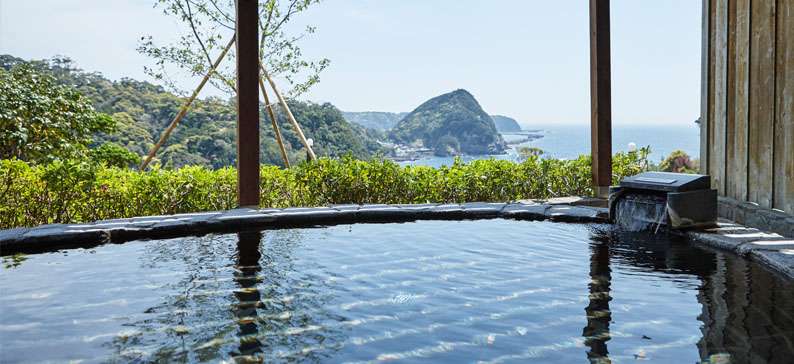
The sudden arrival of the giant “Black Ships” must have taken the citizens of Shimodaby enormous surprise. The port of Shimoda was the very place where Japan closed the curtains on the Edo Period and opened itself up to the world. Today, many historic sites remain in Shimoda, serving as reminders of Japan’s first steps toward modernization. The intimate scale of this town makes for a delightful walk while visiting these sites.
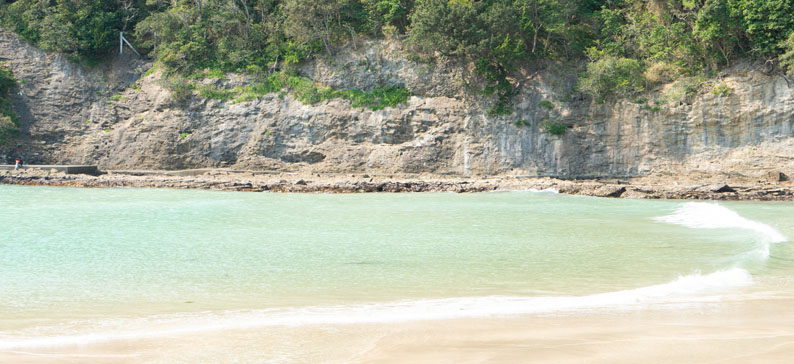
Izu Peninsula’s location in a volcanic zone gave birth to countless hot springs in the area. Combined with its abundance of nature, Izu Peninsula is a popular resort destination for the Japanese. But Izu Peninsula’s popularity only grew within the last few decades. Few vacationers could come to this area due to the lack of a railway. The Tokyu Corporation, which had only operated in the Tokyo area, began servicing this region in 1961 with the inauguration of the Izu Express on the eastern coast of the peninsula, connecting Ito to Shimoda. Since then, the main streets of Shimoda have been lined with Japanese-style hot spring inns.
Today, Tokyu has become a household name in Japan. A massive network comprised of over 200 companies, Tokyu owes its origins to the Meguro-Kamata Railway Corporation, established in 1922, which connected the booming town of Shibuya to the port city of Yokohama in nearby Kanagawa Prefecture. Although Tokyu is known as for its train lines, it has an equally thriving hotel & resort business, with hotels carrying the Tokyu name all over Japan. With nearly 100 years of history, Tokyu has become a trusted brand.
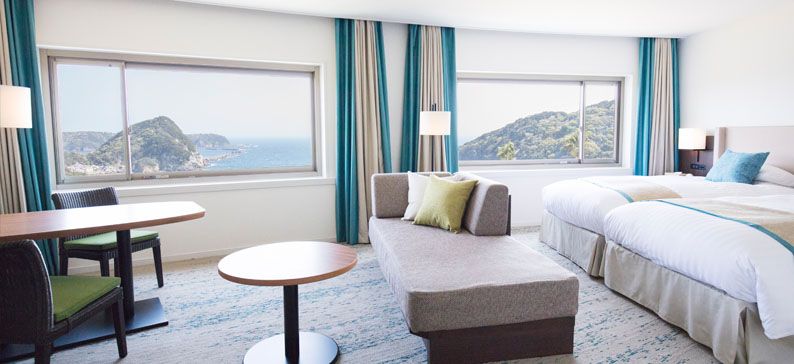
As part of this network, the Shimoda Tokyu Hotel was established in 1962, the year following the opening of the Izu-Shimoda line. At the time, this kind of authentic European-type hotel was a rarity among the traditional Japanese-style inns in Shimoda. More than half a century since its opening, some of its facilities were aged, but the hotel underwent renovations and re-opened in Spring 2017. Combining tradition with modern-day convenience made for high expectations from this hotel.
Upon arrival at the Shimoda Tokyu Hotel, I stand in awe of the magnificent scenery. Built 56 meters above sea level, the hotel overlooks a panorama of vibrant blue ocean. Palm trees in the hotel garden and the temperate climate of the Izu Peninsula augment the freedom of having left the mundane world behind and heighten the resort feel. The best scenery can be seen from the highest floor, where the Japanese Emperor and Empress once stayed. Today, the aptly named Royal Classical Suite has many loyal VIP’s. History and grace fill the air, without the feeling of being old-fashioned.
Walking through the garden and down the steps by the poolside, I arrive at Nabetahama Beach in no time. The sight of a whitewashed quay, sculptured by waves and covered with lush trees, and a small cove, brimming with Mother Nature’s dynamic energy, fills me with excitement. April is a bit early for swimming, but the sea breeze feels good against my face. I could gaze at the clear blue water forever. I stay for a while, collecting sea shells and watch boats go by. Looking out at the boulder covered in greenery, I notice a torii gate. Climbing the tiny steps, I pay visit to a small shrine surrounded by tall grass, and wonder if this deity protects ships at sea.
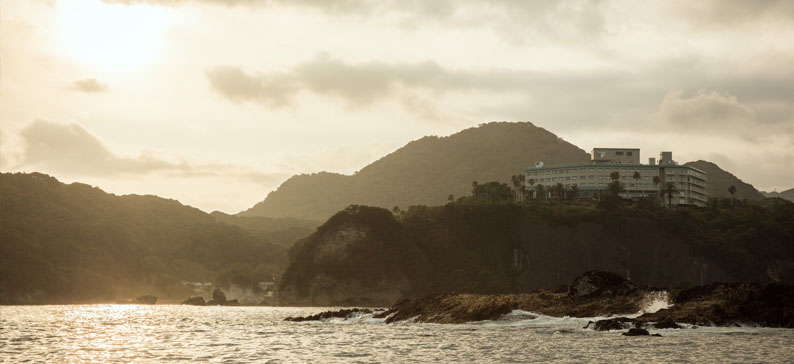
Besides Nabetahama Beach, there are eight other beaches in Shimoda, each with its distinct charm. I make myself feel jealous by wondering if Shimoda residents pass their time discussing which is their favorite beach.
As expected, the restaurant at the Shimoda Tokyu serves a variety of local seafood. What’s unexpected are the copious servings of luxurious ingredients such as Ise lobster, kinnmedai (red bream) and sazae (turban shell). The cuisine is a mixture of East and West, with a few elements of surprise: sashimi served with olive oil and local salt, and the rice at the end of the course accompanied by simmered red bream. All in all, I’m able to enjoy the magnificence of the ingredients on several levels.
Watching the darkness of the night slowly cast its blanket on the sea, I make an effort not to overdo the wine. Tomorrow’s breakfast is supposed to be a buffet with over 100 items. It would be a shame to let a hangover suppress my appetite.
I decide to go for a walk to work off my dinner. During the day, Shimoda is a picturesque place. At night, signs from karaoke pubs and soul music bars cast a different light on this port town. Despite its cozy size, Shimoda offers a decent nightlife. I discover eateries offering fresh local seafood, and decide to come here for lunch tomorrow instead of eating at the hotel.

Shimoda owes its prosperity to Tokyu – not only did it provide a railway service, but it also put in significant effort to develop the region. Surrounded by breathtaking nature, Shimoda’s locality made it suitable for a resort town. But had the railway lines not been established in 1961, I probably wouldn’t be here right now.
Heading back to my room, I’m torn between my choices for tomorrow. Nabetahama Beach or the old part of town? Parting the curtains so I can see the sea when I wake up, I fall into a peaceful sleep.
April 29, 2019
Shimoda Tokyu Hotel information
Address
5-12-1, Shimoda, Shizuoka-Ken
TEL:+81-558-22-2411
- TOPSTAYShimoda Tokyu Hotel
- TOPDESTINATIONSIZUShimoda Tokyu Hotel
